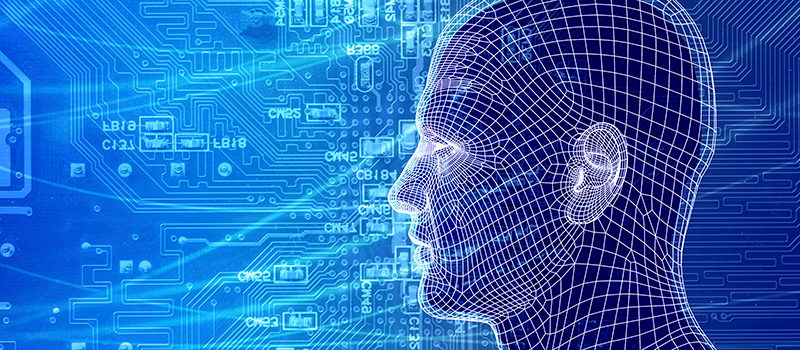Facial recognition is often being talked about as one of the next big things but where can it be used and how secure is it? While on work experience, Sam Shelton (Yr10 student) from The Bishop's Stortford High School looked into the subject.

Facial recognition works by identifying specific landmarks on people’s faces which separates them from others and then allows the technology to identify them as well as any noticeable protrusions. The size and shape of a person’s face also plays a part in identification as some facial characteristics may be closer or further apart depending on the person.
Facial recognition has been tested on CCTV cameras in recent years but it hasn’t really taken off. This is because of the poor quality of the camera which led to the facial recognition technology being inefficient. The London riot (2011) is a prime example. The technology had potential but was held back by the camera quality. In this article, I will talk about where and how facial recognition is being used, whether it should be used for passwords and how it may grow over the next ten years.
How can Facial Recognition be used?
Jaywalking
Now people walking in China will be at risk of being identified via facial recognition, their face will be captured within a fifteen second video which takes several shots of the offender. The offenders face is then presented on a screen indicating that they have been caught. They will later be contacted by the traffic police. There are three punishments of which can be chosen by the offender. This consists of either:
• spending twenty minutes with a traffic officer and help control traffic
• participating in a thirty-minute traffic rule course
• paying a fine which is the equivalent of around $3
Since the implementation of the technology in Jinan on June the 20th, there have been 6000 cases of people jaywalking captured.
Universities
Another example of where facial recognition has been used is also in China, and it’s in one of their top Universities in Beijing. The technology is used in dorms to identify who the person is and whether they’re a resident of the area, if they’re a resident then they are allowed into the dorm and if they’re not a resident they’re not allowed in.
Airports
Delta who are a U.S. airline are implementing facial recognition technology to help improve the airport experience. The technology’s aim is to speed up the baggage check-in process. The airport it is currently being used in is Minneapolis – St. Paul International Airport. Delta (The airline) has invested six hundred thousand U.S. dollars for the summer this year when the kiosks will be tested. Delta claims that this self service has the potential to be able to process twice the amount of customers per hour.
Retail and Banking
Facial recognition will be used by HSBC in their bank at certain checkpoints. These check points will be for accessing areas containing confidential data. Facial recognition is also used in China in ATM’s. It works by matching the person’s face with an ID database. Also, a device is used in the popular restaurant KFC which tries to recall what the person’s usual order is.
Facial recognition – Should it be used for passwords?
According to “Internet World Stats” approximately 3.7 billion people have access to the internet. This means that there are billions of passwords that are forgotten every year and according to Password research 82% of people at some stage have forgotten a password to a website. The speed and efficiency is a clear positive factor of facial recognition which passwords do not have.
Advantages of Facial Recognition
It doesn’t just identify your face, it also identifies:
• Race
• Gender
• Age
However, it is beatable
The downside to the fact that your password is your face means that it can be hacked or bypassed simply in some cases. A man called Dan Moren (A technology writer and novelist) conducted an experiment by videoing himself and presented it to the screen. Moren was then granted access to his bank account with only a video of his face.
This would suggest that we shouldn’t use facial recognition as a password for the current time as it has not been sufficiently developed to ensure that it will not be bypassed simply. Instead we could use artificial intelligence in banking and the BBC claim that over the next three years Artificial Intelligence (AI) will be the main way that a bank will interact with its customers over the next three years.
What else is facial recognition used for?
Police
• CCTV cameras identifying suspects.
• Casinos cameras will be able to identify whether a person is distressed and they are having a gambling problem.
UK Drinking Laws
• The technology is able to identify a person and what age they are. Therefore, it could identify a person who is drinking and whether they’re above the legal age.
Conclusion
Facial recognition has its values and therefore it will be used more by governments worldwide for things such as identifying people that jaywalk or used by the police to help identify criminals.
Over the next ten years facial recognition will become more apparent in our lives. It is highly likely that you will see facial recognition more commonly in airports. However, at the moment it is too risky to add facial recognition into banking due to fraud and how it is possible to bypass security. If these issues can been overcome then it is possible that facial recognition will be adopted worldwide in banks.
Sam Shelton -TBSHS
23rd June 2017
http://www.ecns.cn/2017/06-20/262190.shtml
http://www.telegraph.co.uk/news/2017/05/16/facial-recognition-installed-female-university-dormitory-china/
http://www.computerworld.com/article/2897117/alibaba-uses-facial-recognition-tech-for-online-payments.html
https://www.theguardian.com/technology/2017/jan/11/china-beijing-first-smart-restaurant-kfc-facial-recognition
http://www.internetworldstats.com/stats.htm
http://www.biometricupdate.com/201503/can-facial-recognition-systems-can-be-spoofed-using-high-quality-video
http://www.technologyscribes.com/face-recognition-technology-banks-atm
http://www.cbsnews.com/pictures/7-surprising-ways-facial-recognition-is-used/5/
http://www.foxbusiness.com/features/2017/06/20/airlines-using-facial-recognition-tech-to-boost-airport-experience.html
https://www.ifsecglobal.com/hsbc-banks-on-facial-recognition-technology/
http://www.bbc.co.uk/news/technology-39419727
http://passwordresearch.com/stats/statindex.html